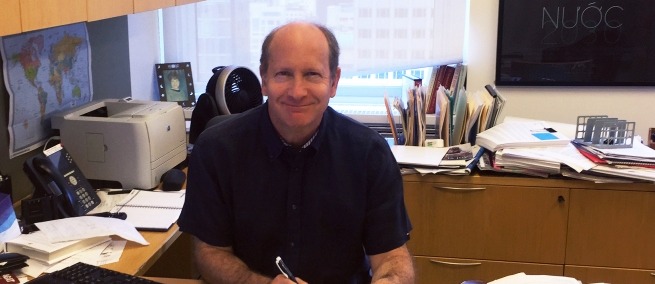
Doron Weber has worked at the Alfred P. Sloan Foundation for 20 years. He is currently the Foundation’s Vice President and Program Director for its Public Understanding of Science & Technology program. The Sloan Foundation is a non-profit philanthropic organization which awards approximately $100 million per year in grants supporting original research and broad-based education in science, technology, engineering, economic performance, and mathematics. Though predominantly a science foundation, Sloan’s name is often heard on public radio such as WNYC’s Radiolab, on public television such as PBS’s NOVA and THE AMERICAN EXPERIENCE, credited in films such as THE IMITATION GAME, and in plays such as PROOF. Doron Weber was instrumental in building out the Foundation’s support for the arts—awarding grants to film, theatre, radio, television, books, and new media projects to build bridges between the two cultures of science and the humanities translating science and technology for the public. On May 19, Science & Film spoke with Weber at Rockefeller Center in the Foundation’s 22nd floor offices, whose windows show Central Park in the distance, and whose walls display portraits of Alfred Pritchard Sloan Jr., founder of General Motors.
Science & Film: You have been supporting the development of films for almost 20 years. What stories have not yet made it to screen that you still want to see made?
Doron Weber: Hedy Lamarr for starters; that is the one I have invested the most time in and it is tantalizingly close, but it’s not out yet. Susan Sarandon is producing the documentary, which for the moment is called BOMBSHELL: THE UNTOLD STORY OF INVENTOR HEDY LAMARR, and PBS American Masters will definitely do this so that is great. Then, we are also helping develop a four-part miniseries about Hedy Lamarr with Diane Kruger. The Ramanujan film [THE MAN WHO KNEW INFINITY] just came out–that took a while. The film [PHOTOGRAPH 51] about Rosalind Franklin is finally going to be made; Nicole Kidman is in the West End Production and it’s coming to New York, and Michael Grandage signed on to direct. There is also a Marie Curie project, A NOBLE AFFAIR—films have been made about her before, so it’s not introducing to people someone they don’t know. On the other hand, looking at her in a modern light, I’d say we still haven’t caught up to this extraordinary scientist. In the same way Hedy Lamarr was ahead of her time, in a completely different way I would say Marie Curie was years ahead of everybody. So, I think it will be interesting for a contemporary audience to see her. We finally have a Jane Gooddall film coming out. We’re developing a play about Fritz Haber. We had a short film from Columbia University years ago, and now we have a screenplay about Haber that I think is amazing, and that’s another really powerful and important story I would like to see come out.
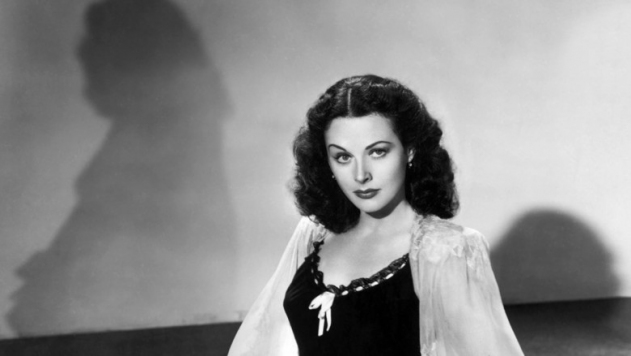
And then, there’s the HIDDEN FIGURES story, which we supported as a book by an unknown author, Margot Lee Shetterly. I didn’t even know those stories which is amazing. This whole subculture of African American scientists and engineers did world-class work and played a key role in the space program, and most of us knew nothing about it. That book is coming out in the fall and the film is coming out in early 2017. After the #OscarsSoWhite controversy, it’s attracting major talent: Jim Parsons is now in it from BIG BANG THEORY, Octavia Spencer, Taraji P. Henson, Janelle Monae, Kirsten Dunst, Kevin Costner, Pharrell is doing the music. Everyone wants to be in this movie. Now I feel like I’ve got to bring out the backlist because the stories we have been pushing for so long look like they are very close. We would still like to do a film about Lise Meitner and one about Edwin Hubble, I think people might be ready for those stories.
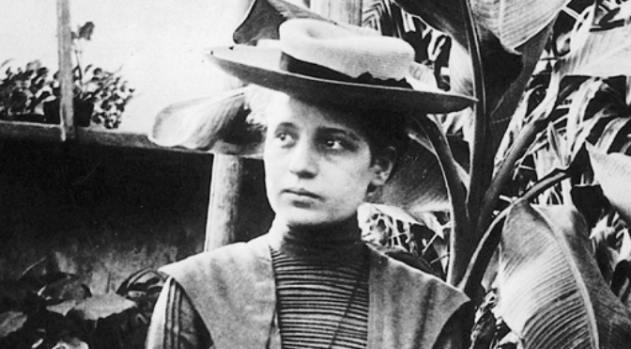
S&F: Speaking of the Oscars, Sloan has now had two films at the Oscars—THE MARTIAN and THE IMITATION GAME.
DW: I don’t want to take credit for THE MARTIAN. To be fair, THE MARTIAN got a Sloan best Feature Film Prize. I think THE MARTIAN is a beautiful film and beautiful example of what we strive to do. The film is a great example also because it made a lot of money, which means more films like that will be made, and the role of science in it is so fundamental. And of course, I like the part in it about international cooperation among scientists, an idea around which I’m piloting a new initiative in International Science Engagement.
But, I prefer to boast more about the films we have helped develop and get completed in some form.. I’d like to see, for example, Jeremy Irons get a Best Supporting Actor nomination for playing G.H. Hardy in THE MAN WHO KNEW INFINITY. I thought PARTICLE FEVER should have gotten an Oscar nomination. Those are projects I am proud of. I don’t mind losing the Oscar and talking about the good work that we do, because in the end, Oscars are great but our work is about science and achievements that are going to last.
-large-picture.jpg)
S&F: It does say something interesting about our culture that science films are getting so much attention, and are making so much money.
DW: The premise of our whole program is that we live in a scientific and technological society and so therefore in order to understand what’s happening around us we have to grapple with these subjects. Now, everyone is awakened to that in a more conscious way and we’re at the inflection point. Today it’s more a question of how good is the science story, how interesting is it, and what is its relevance to me? That’s progress and I’m proud of the small part we played in moving the cultural needle on that.
I think shows like SILICON VALLEY are really important. I was begging students for a decade to write about that subject. I was saying, don’t forget about technology, look at Silicon Valley, look at what’s going on there and the great characters like Steve Jobs, Bill Gates, Jeff Bezos I would say that is driving our culture in the same way Hollywood was doing when I first started the film program in the late ‘90s. Silicon Valley is setting the cultural norms today, for better or worse.
S&F: They are also affecting the film industry.
DW: That’s exactly right: Netflix, Amazon, Google. YouTube is starting a channel to compete with Netflix. The tech industry startups are buying media companies and going into production. Whoever tells the stories, controls the narrative…the victor writes the history. You’re right, the tech industry has gotten into storytelling and now with SILICON VALLEY it’s about them and their culture. I’m addicted to that show. It is like ENTOURAGE; it is ripped from the headlines. You know who everybody is and it is not exaggerated. Mark Zuckerberg, Eric Schmidt, Peter Thiel, they’re kind of rock stars, albeit still nerds. I think there is a shift, absolutely. And now it’s television, arguably, which is more important than the film business. It’s all good for us because we support rich content and are platform agnostic.
S&F: This shift will probably affect who you are giving funds to, right? If the culture is moving more in the direction of making content for VR or television, might that change your funding priorities?
DW: Absolutely. What we care about is the content of science, technology, and engineering. We chose film because it was a universal language. The irony is that I actually started with television. I thought with television you lived with characters over a longer period of time so you got to know them better and became more familiar with their world. Television was then considered the poor cousin to film. This was in the late ‘90s, 1997 probably. I think in retrospect that first meeting at the American Film Institute where I had on one stage: David Milch, who was the hot writer and was working on NYPD Blue, Jim Watson, Richard Dawkins, Carolyn Porco, a planetary scientist who had advised Jodie Foster on Contact and Richard Rhodes, and we had writers from ER and some other popular shows at the time. We were first introducing the idea of writing about science and Milch, being provocative said, I’ve met more gas station attendants who could look me in the eye than scientists. The scientists went berserk and they fought. So it really blew up. It was really the two cultures colliding.

When I think about that moment now, we didn’t have CSI, we didn’t have PROOF, we were really trying to do something novel and weird by introducing this idea of dramatizing science for entertainment and that was the first reaction, it blew up. Since then, slowly, when the CSI series came out, and NUMBERS, and THE BIG BANG THEORY, and A BEAUTIFUL MIND, THE THEORY OF EVERYTHING, THE IMITATION GAME, GRAVITY, THE MARTIAN, and now it’s here. We will look at VR, and we are looking at gaming. We are interested in finding the public. It is the Willie Sutton rule: why do you rob banks? Because that’s where the money is. So, we will go where the public is.
S&F: How did the conflict between writers and scientists affect Sloan’s program?
DW: Fortunately, Andy Pollack, who is still at The New York Times, wrote a good article about it. You could have turned it into a scandal and ended my program before it started. But it weirdly helped. We started a screenplay development office out there, and writers were submitting scripts, and you implanted the idea that science was something you could dramatize, because it takes a long time. In Hollywood, if anyone thinks you have a good idea they want to steal it, which is exactly what we wanted them to do, since we don’t own anything and are in the nonprofit business of propagating ideas.
Now, with the Internet of Things, Blockchains, CRISPR, and Artificial Intelligence, literally determining everything we do from the food you eat to the car you drive, who you’re dating, how you bring up your children, how you think of yourself, it is completely pervasive. I would like to think that what we are doing is bringing the two cultures together, so we are not privileging science. If you ignore science and technology you’re just ignorant and you’re simply not going to understand how things work or how to progress, but if you all you understand is science and you don’t appreciate art or understand the deeper human significance of what some of these things mean, in my view you’re only seeing half of the picture and you can inadvertently cause damage. I think it is going to be more and more important for us as a society to make sure there is always a balance.
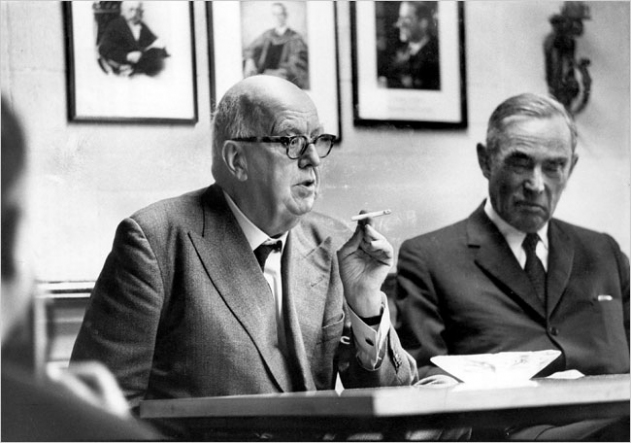
I read the C.P. Snow essay recently. He said, I spend my days with scientists, and then in the evenings I am a writer. Being in those two worlds, which is kind of what I inhabit, if you’re hanging out with both you realize there is a whole world here and you could only be getting half of it. Of course, Snow lived in a very elite world. He talked about [G.H.] Hardy and [John] Littlewood who were his peers at Cambridge. For writers, he talks about T.S. Elliot and Ezra Pound. He was thinking about the two cultures in terms of the elite. The scientific revolution is arguably still going on and communication is still a problem. His fundamental argument to me is still sound and what is interesting is that this problem is not just in America, it’s not just in England; he referenced Russia and Canada, but I’ve been in Japan and China, and across every culture you have this division. Knowledge is power and scientists in our society somehow have that, so you put them up on a pedestal but then worry that they have too much control, and we have to come to terms with that and just say, the decisions I am making are in the end human and they affect all of us. But we cannot turn our back on science.
S&F: In that sense, is the Public Understanding Program giving people more power?
DW: I never thought of it in those terms. Knowledge is power–being able to see a fuller picture and therefore put things in better context. If I just tell you, “with CRISPR we are going to be able to edit your genes,” you may just listen to the l technology part of it. Then someone else could say, “actually it is harder to do,” or, “it could lead to new organisms.” Another person might ask, “Do I actually want to change the human germline? And if I want something now, maybe 50 years from now the environment will change, and maybe having this quality won’t be a good thing.” There are all kinds of ways we have to think about science. You want every citizen to be able to grapple with scientific advances, and not to just leave it to one group to make those decisions, because those decisions touch on the most fundamental parts of our lives.
One of our scientist reviewers recently said, I think of culture as the sum of all knowledge. Science is part of culture. It is not actually separate; there are not two cultures. What we want is for people to see it in a totality. Culture is the matrix that we all inhabit. Everything I do, until they drag me out of this place, is say that there isn’t anything from which you can exclude the human element or the social and moral context.
S&F: You are living that double life like C.P. Snow as a writer and working with scientists.
DW: Yeah I was reading Snow and I was like, you’re describing my life between here and the Writers Room and my friends who are writers. There are more efforts now, but it is still roughly true that the two cultures don’t communicate well. I think the education system has to change. Marc Tessier-Lavigne who was the head of Rockefeller just left to become the president of Stanford so I sent him an email and said, “Marc, don’t forget the arts, the arts.” At Stanford it’s less than 5%. No one wants to study the humanities, and then you’re limiting yourself in terms of creativity and innovation.
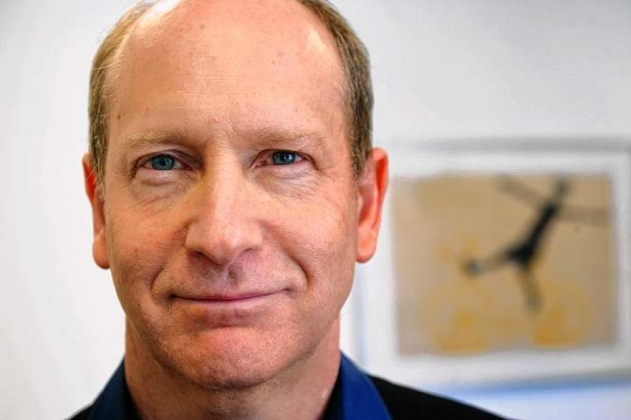
S&F: Have you ever thought about writing the singular culture, the follow up to C.P. Snow?
DW: I am going to try to write something about this. I am just drafting it now. I will make a little bit of an argument but the best way is to just look at examples of how different works of art do this and deal with science. But yeah, I would definitely passionately argue for the need for people to more effectively communicate across both cultures and within each culture. The idea that you call someone a scientist—the average biologist knows less physics than I know or you know. They are all in super specialized fields, and we need ways for them to communicate better with each other, never mind with non-scientists. The notion that all scientists speak the same language, they may have some values that are more in common with each other, but they do not understand each other’s work, so you almost need a translation device for them to talk to each other. Even bringing experts in computation and biology and chemistry and physics and mathematics together creates all kinds of sparks because they are normally thinking and working in very different ways.
The Sloan Foundation supports the Museum of the Moving Image to publish Science & Film. Science & Film houses a living archive of Sloan-developed short films available to stream as well as shorts and features awarded grants by the Foundation via its twelve partner institutions. Science & Film is broadening its mandate to cover television, theatre, games, and other dramatizations of science and technology content. Stay tuned to Science & Film for coverage of the projects covered in this interview.
Doron Weber lives his second life as a writer, and is author most recently of Immortal Bird: A Family Memoir.
PARTNERS
TOPICS